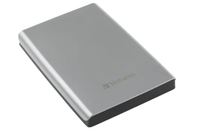What to Know Before Buying a Hard Drive

Hard drives come in different sizes and types. The one universal truth regarding hard drives is that they will die eventually. It is completely normal to purchase a new hard drive every couple of years, either to provide additional backup space or to replace an old drive.
If you think you may be in need of a new hard drive in the near future, it helps to have a little bit of guidance. Here are a few things to know before ultimately buying a new hard drive.
HDD vs SSD
Don’t just run to a trustworthy vendor like RS and buy the first hard drive you see. There are a few helpful tips when buying any piece of technology, especially a hard drive, that can make the process a bit smoother and ensure you get what you need.
For starters, do you need a hard disk drive (HDD) or solid-state drive (SSD)? HDDs are cheaper but SSDs read and write faster, draw less power, and last longer since they have no moving parts. If you are looking for a quick, cheap fix, then an HDD is a better option. If you don’t mind paying a little more for longevity, then an SSD is clearly the best option.
Sizes
Now that you know the difference between a hard disk drive and solid-state drive, the next consideration to make is size. Generally speaking, data drives come in either 2.5-inch or 3.5-inch drives. Desktop HDDs tend to be 3.5 inches, while laptop HDDs are generally around 2.5 inches. There isn’t a lot of wiggle room to worry about but knowing the two main sizes ahead of time will save you from making a simple but avoidable mistake.
For the most part, you can use either as an external option. If you are looking to install the drive in your desktop cabinet or laptop casing, then the right size is imperative. SSD drives are generally the same size, just make sure that you pay attention before making a purchase.
Specifications and Performance.
Finally, there are two critical factors that must be kept in mind. Those are performance and specifications. Let’s break down each of these factors and see just how important they are when choosing a hard drive.
Storage. To even the most novice of computer owners, storage capacity is the first thing that gets taken into consideration. Both HDDs and SSDs are capable of holding a ton of storage space. SSDs are capable of going anywhere between 5 and 8 TB at the most. Compared to an HDD, which maxes out at 18 TB because of physical limitations, an SSD doesn’t quite stack up.
Cache space. Hard disks need to transfer data from one section to another, there is an area of embedded memory known as the cache or buffer. Having a larger cache means being able to transfer the data faster since more information can be stored at a single time. Most of the modern HDDs out there will have caches ranging from 8MB to 256MB.
Transfer speeds. This is perhaps the second-most important factor to consider. The transfer speed of any disk drive is measured in revolutions per minute (RPM). Buying a drive with a higher RPM means getting faster transfer speeds of data both to and from the drive. Modern SATA speeds are around 7200RPM. That said, SDDs tend to have the faster transfer speeds.
Failure rate. This applies to HDDs since they have moving parts. Not every HDD wears at the same rate, so knowing the failure rate will provide a clearer picture as to that drive’s lifespan.

